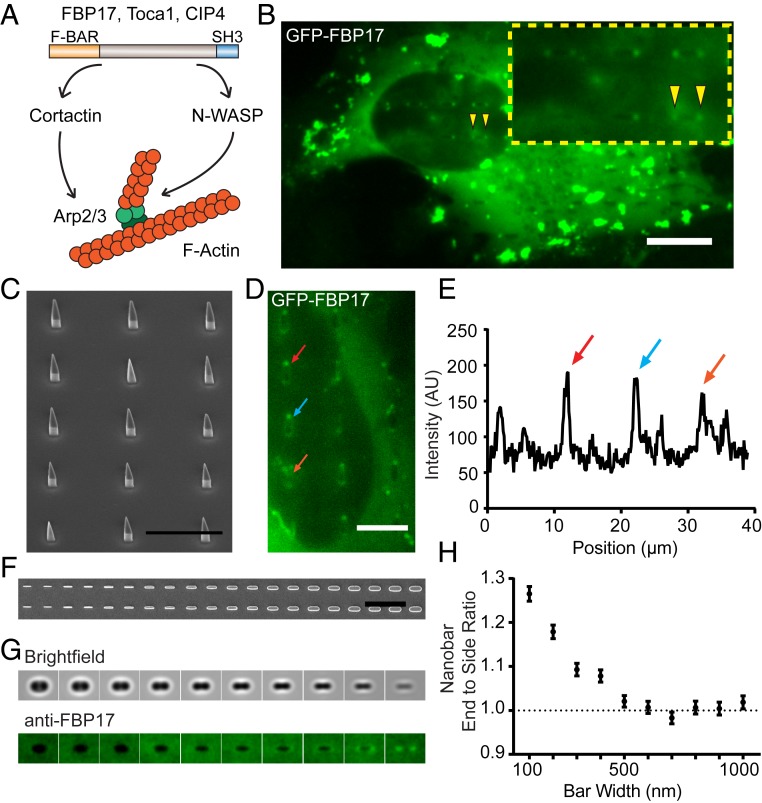Fig. 4.
FBP17 preferentially accumulates at high curvature locations induced by nanostructures. (A) A schematic drawing of Toca family proteins activating Arp2/3-mediated actin polymerization. (B) GFP-FBP17 preferentially accumulates to the ends of nanobars. (C) An SEM image of wedged nanobars. (D) On wedged nanobars, GFP-FBP17 shows a much higher signal at the narrow end (high curvature) than the wide end (low curvature). (E) An intensity plot along a line of wedged nanobars illustrates that GFP-FBP17 prefers the narrow ends of wedged nanobars. (F) A gradient nanobar array with 2-μm length, 800-nm height, 5-μm center-to-center distance between nanobars, and a variable width from 100 to 1,000 nm with 100-nm increment. Each width is represented by 2 bar columns in the array. (G) The averaged nanobar images of anti-FBP17 immunostaining for 10 different nanobar widths, from the largest 1,000 nm to the smallest 100 nm. n = 1,278 to 1,728 nanobars (see SI Appendix, Table S4 for detailed statistics). (H) The measured nanobar end-to-side ratio of anti-FBP17 decreases with the bar width but levels off when the bar width is 500 nm or larger. Error bars represent SEM.

